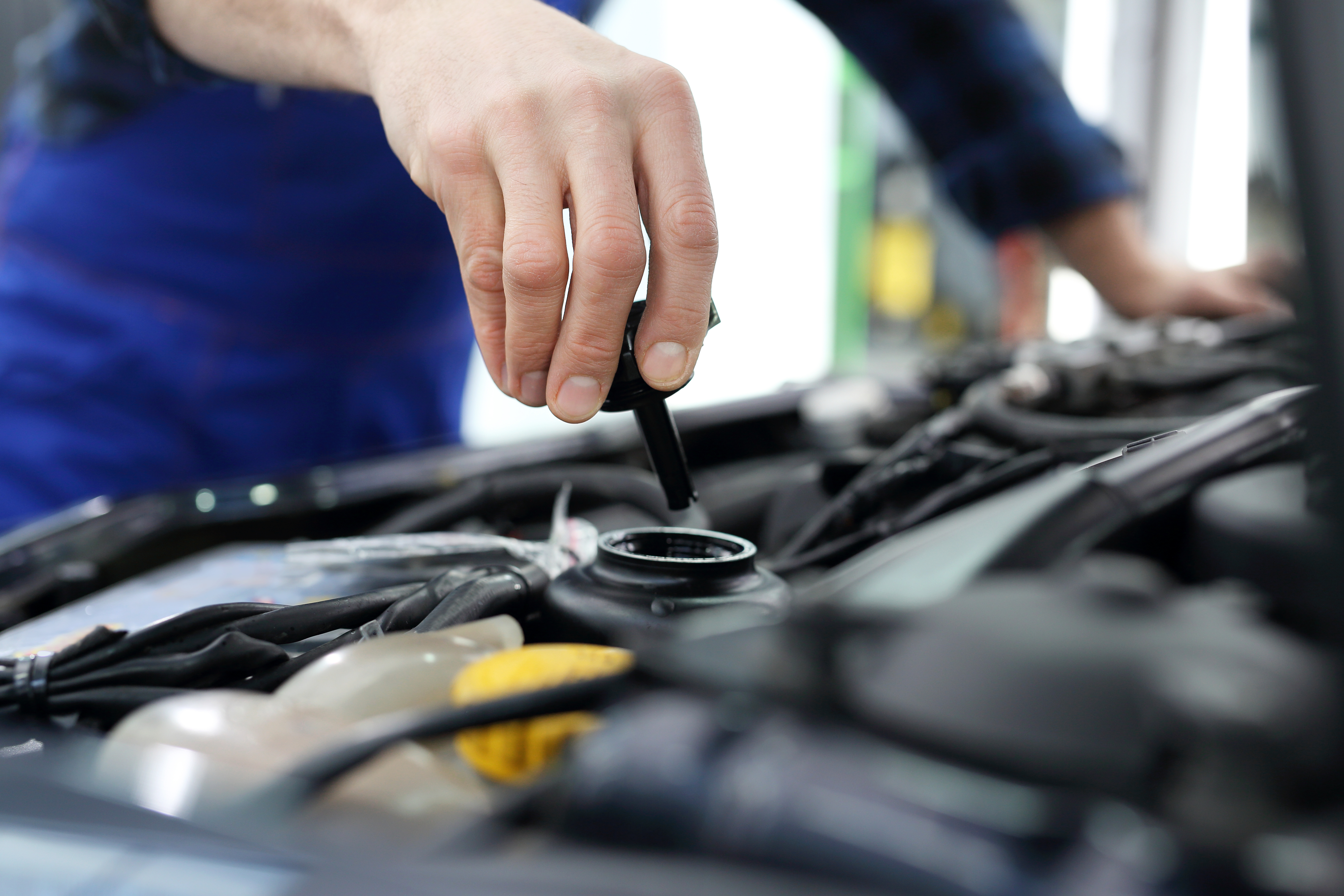A summer car care guide from Kunes Auto Group
When summer arrives, it’s not just people who feel the heat—your vehicle does too. High temperatures can put extra strain on your car’s engine, systems, and especially its fluids. Just like we need to stay hydrated in hot weather, your vehicle needs properly maintained fluids to keep running smoothly and safely.
At Kunes Auto Group, we’re here to help you protect your vehicle and avoid unexpected breakdowns this summer. Below is a detailed guide to help you check and maintain your vehicle’s essential fluids during hot weather.
Why Fluid Maintenance Is Critical in Summer
Summer heat can cause automotive fluids to break down faster, evaporate, or become less effective. This can lead to overheating, component wear, or even complete system failures if left unchecked. Regularly checking and maintaining fluid levels will help your car stay reliable and efficient, no matter how high the temperature climbs.
1. Engine Oil: Lubrication and Cooling
What it does: Engine oil lubricates moving parts, reduces friction, and helps dissipate heat from the engine.
Summer concern: Hot weather can thin engine oil, reducing its effectiveness. Older or degraded oil breaks down even faster in the heat.
How to check:
- Park on level ground and turn off the engine. Wait a few minutes for the oil to settle.
- Locate and remove the dipstick, wipe it clean, reinsert it fully, and pull it out again.
- Check that the oil level is within the recommended range and that the oil is clean and amber in color.
Tip: If the oil is dark or gritty, it's time for a change. Stick to your vehicle’s recommended oil change intervals, especially during the summer.

2. Coolant: Temperature Regulation
What it does: Coolant (also called antifreeze) keeps your engine from overheating by regulating temperature.
Summer concern: Engines run hotter in warm weather, increasing the importance of having proper coolant levels and a healthy cooling system.
How to check:
- Only check coolant when the engine is completely cool.
- Locate the coolant reservoir and ensure the fluid level is between the “min” and “max” marks.
- If it’s low, top it off with a 50/50 mix of coolant and distilled water, unless using premixed coolant.
Tip: Never remove the radiator cap when the engine is hot—it can release scalding steam.
3. Transmission Fluid: Smooth Performance
What it does: Transmission fluid lubricates the moving parts within the transmission and ensures smooth gear changes.
Summer concern: High temperatures can cause transmission fluid to deteriorate, especially under heavy use like towing or long-distance driving.
How to check:
- Some vehicles have a dipstick for transmission fluid; others may require professional inspection.
- If accessible, check with the engine running and vehicle in park. Fluid should be pink or red and free of burnt odors.
Tip: If the fluid is dark or smells burnt, it may be time for a transmission service.

4. Brake Fluid: Reliable Stopping Power
What it does: Brake fluid transfers the force from your foot to the brakes to stop the vehicle.
Summer concern: Brake fluid absorbs moisture over time, which can reduce braking efficiency and cause a spongy pedal feel—especially when hot.
How to check:
- Locate the brake fluid reservoir, usually at the rear of the engine bay.
- Fluid should be between the “min” and “max” lines and should be clear to light yellow in color.
Tip: Dark or dirty brake fluid means it's time for a flush. Have your brake system inspected if braking feels soft or unresponsive.
5. Power Steering Fluid: Effortless Control
What it does: Assists with steering, making it easier to turn the wheel.
Summer concern: In older vehicles, heat can cause power steering fluid to degrade or leak.
How to check:
- Locate the power steering reservoir.
- Some caps have dipsticks built in—check the level and ensure the fluid looks clean and free of contaminants.
Tip: If you hear whining when turning or experience stiff steering, your fluid may be low or contaminated.
6. Windshield Washer Fluid: Clear Visibility
What it does: Helps keep your windshield clean from bugs, dust, and road grime.
Summer concern: Washer fluid evaporates more quickly in heat, and summer driving often requires more frequent use.
How to check:
- Open the cap on the reservoir marked with the windshield icon.
- Top off as needed with washer fluid. Avoid using plain water, which may leave streaks or promote algae growth.
Tip: Consider using a bug-removing formula if you drive frequently in rural or highway areas.
Don’t Ignore Warning Lights
Modern vehicles are equipped with sensors that monitor fluid levels and conditions. If a warning light appears on your dashboard—whether it's for low oil pressure, coolant temperature, or another system—get it checked immediately. These alerts are your first sign that something needs attention.
Let the Experts at Kunes Auto Group Help
Maintaining your vehicle’s fluids is one of the simplest and most important ways to ensure a reliable and safe driving experience—especially during the summer months. If you're unsure about how to check your fluids or just want a second opinion, our trained service technicians are here to help.
We offer:
- Full fluid inspections
- Oil changes and coolant flushes
- Transmission and brake fluid services
- Seasonal maintenance packages
Schedule your summer service appointment today at any of our convenient Kunes Auto Group locations. We’ll help you drive with peace of mind—no matter how hot it gets outside.




